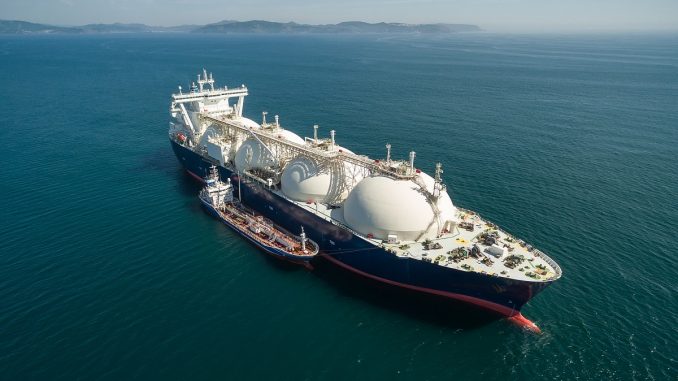
In an effort to become more environmentally friendly, the shipping industry is beginning to turn toward LNG (liquified natural gas) fuel and away from diesel. LNG is a cleaner-burning fuel that causes fewer environmental impacts. In order to store LNG for ships to use, the practice of LNG bunkering is becoming commonplace. Brian Ladin of Delos Shipping in Dallas Texas explains how LNG bunkering works and how it provides an advantage to shipping firms.
What is LNG Bunkering?
LNG bunkering provides liquified natural gas to a ship to be used as fuel. LNG is a less-polluting fuel than diesel, heavy fuel oil, and marine gas oil. It produces less sulfur pollution in the environment. Regulatory pressures have led shipping companies to explore fuels which will make less impact on the environment.
LNG is predicted to keep a stable price point over the coming years. It is also reliably available from American and Canadian sources.
To provide liquified natural gas to a ship, the refueling system needs to be completely changed. LNG is more volatile than diesel and oil. The safe bunkering of LNG fuels requires many special safety accommodations. Emergency shut-down systems are a must for LNG fueling of ships.
LNG Bunkering Types
LNG supply facilities and receiving ships need different types of safety equipment. The various types of LNG bunkering include ship-to-ship, terminal-to-ship, and truck-to-ship operations. Reserving this fuel in a bunker presents the largest advantages to shipping companies because they can store the fuel for an extended period of time and mitigate any price increases that may occur.
Ship-to-Ship Bunkering
Specialized vessels are built which can store fuel until a ship in need is ready for it. These ships are generally anchored at a major port, but they can also be used in a mobile capacity. The world’s largest bunkering ships hold up to 18,600 cubic meters and are built in China.
These ships combine the best in navigation and maneuverability with safe LNG transfer. They are becoming an integral part of large shipping ports around the world.
Terminal-to-Ship Bunkering
Terminal-to-ship bunkering is most common in large, established ports. These facilities are most frequently found in Europe, but they are being built in Japan, Southeast Asia, and the United States.
Rotterdam in the Netherlands has been one of the early pioneers of terminal-to-ship bunkering. The port has three large storage tanks with a capacity of 180,000 cubic meters.
Hammerfest in Norway is another example of a large bunkering facility. This port has a storage capacity of 1,250 cubic meters. Its pump capacity is 90 tons per hour.
Barcelona’s new environmental regulations pushed a need for LNG fuel operations rather than traditional diesel and oil. The new terminal is able to handle vessels of all sizes.
In North America, Montreal has been a pioneer in tank-to-ship bunkering. Jacksonville, Florida is one of the first shipping hubs to offer full on-dock and near-dock fueling services. Dual-fuel container ships are already available, and there are plans to create a shore-to-ship service.
Port Fourchon, Louisiana is another large shipping port where LNG bunkering is taking place. There are plans to build an $888 million bunkering facility to export LNG. This facility will be able to handle 5 million tons of LNG each year.
Panama has a new terminal featuring a 180,000 cubic meter storage tank. This facility is projected to attract many different industries, including LNG suppliers, utilities, and other small-scale customers.
Truck-to-Ship Bunkering
Truck-to-ship bunkering is probably the most common method of getting LNG fuel onto a ship. It does not require any special port facilities, but the capacities are much smaller than those of shore-based or ship-based systems. Safety is a major priority at these facilities since the operation requires tanker trucks to move on and off the pier.
Many different types of safety equipment are required to make sure that this fuel transfer runs smoothly. These safety functions include dry cryogenic couplings, cryogenic breakaway couplings, powered emergency release couplings, proper transfer hoses, and power units. Using truck-to-ship bunkering is safe when the newest safety measures are followed.
Global Reach of LNG Bunkering
LNG bunkering is becoming popular throughout the world, reducing emissions in the environment and providing a cleaner-burning, more efficient fuel source. The operation has already become popular in North America, and it has begun to be influential on other continents as well. African ports, in particular, those located in South Africa, have begun to provide LNG bunkering to ships that come for refueling.
Brian Ladin of Delos Shipping in Dallas Texas emphasizes the importance of LNG bunkering to today’s shipping industry. As new ships are built that run on cleaner natural gas, it will be crucial to build facilities to fuel these ships. LNG bunkering can also serve land-based transportation.

Be the first to comment